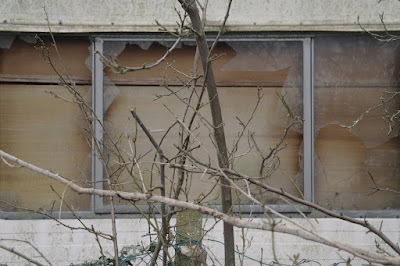Vivian Maier was an American photographer. She worked as a nanny and did photography in her spare time - her photos primarily consisted of people and architecture of Chicago, New York and Los Angeles. During her lifetime her photos were unknown and unpublished - whereas they were first published on the internet in 2008, her work soon got noticed and was critically acclaimed, now being exhibited worldwide. I have chosen to do research on Vivian because her work is fascinating and very basic.
1. SELF-PORTRAIT, 1253
This is a self portrait from her book 'Finding Vivian Maier'. This image shows Vivian Maier and a young girl. We don't know much about this image, but the young girl looks very strong standing and empowered which gives this image a whole new meaning to it. We don't know who this girl is so it creates a mystery as too why Vivian chose to take a photograph with her. I am inspired by this picture as it is a basic self-portrait but because of the scenery and the girl the photograph now appears differently. In this image the framing device is the window which creates a frame around Vivian and the girl, they are very clear almost as if someone has taken a photograph of them.
2. 1955, NEW YORK CITY
The image shows two woman sitting on a bench minding their business and enjoying their day. Vivian has captured this so that the camera is just behind the bench and the woman nearest to the camera is more in focus. I like how the woman in focus you can see her hairstyle clearly and it represents the kind of style and fashion that was common for woman in those days. I am inspired to photograph people and use them as a framing device in an image. The framing device in this image is two woman which frame the background.
3. 1956
This image shows a reflection of a woman in a mirror, this image is creative as you can not see Vivian photograph this. All of her images are in black and white which gives a very old fashioned affect, which is very interesting to me. The angle of this photograph makes the woman in the reflection look strong. It looks as if they are inside, they could be in a shop that sells jewellery, make up, etc as they would use the mirror to present the product for the buyer - which could be what is happening in this image. I am inspired to photograph reflections as they give a different photographer view. The framing device in this image is the mirror as it frames the woman's face.4. SELF-PORTRAIT, UNDATED
This is a self portrait of Vivian Maier. Vivian did a lot of self portraits and used reflections to show herself, this is fascinating as she is using creative ways of presenting herself - rather than just using a mirror in her own house, she goes out and finds shop windows, mirrors, etc so she is able to photograph herself. This is interesting because I feel it is easily achievable to do so, as I live near a town centre which has plenty of shops, etc. I like how you can see what is behind Vivian as she is taking this image, it shows what it was like during her time and what was happening as she was taking this image. I also am capable of photographing at home. I am inspired to use whatever resources I see as this will give me a natural/raw effect of the image. The framing device is the window.


























